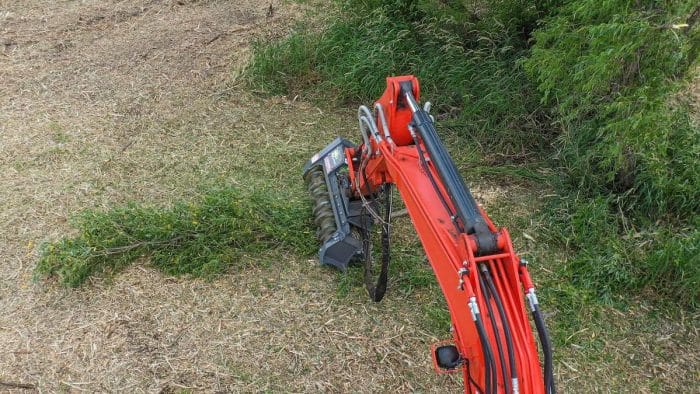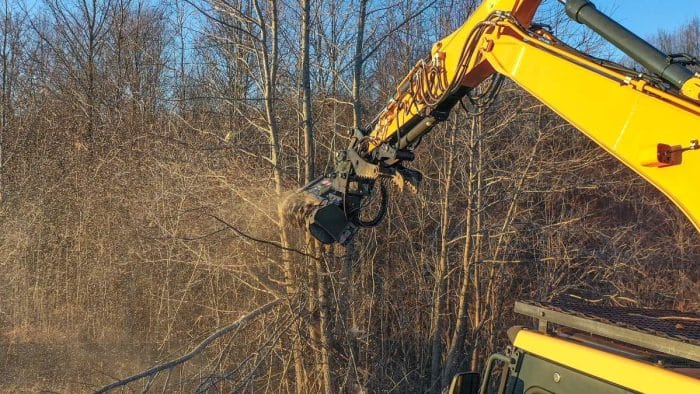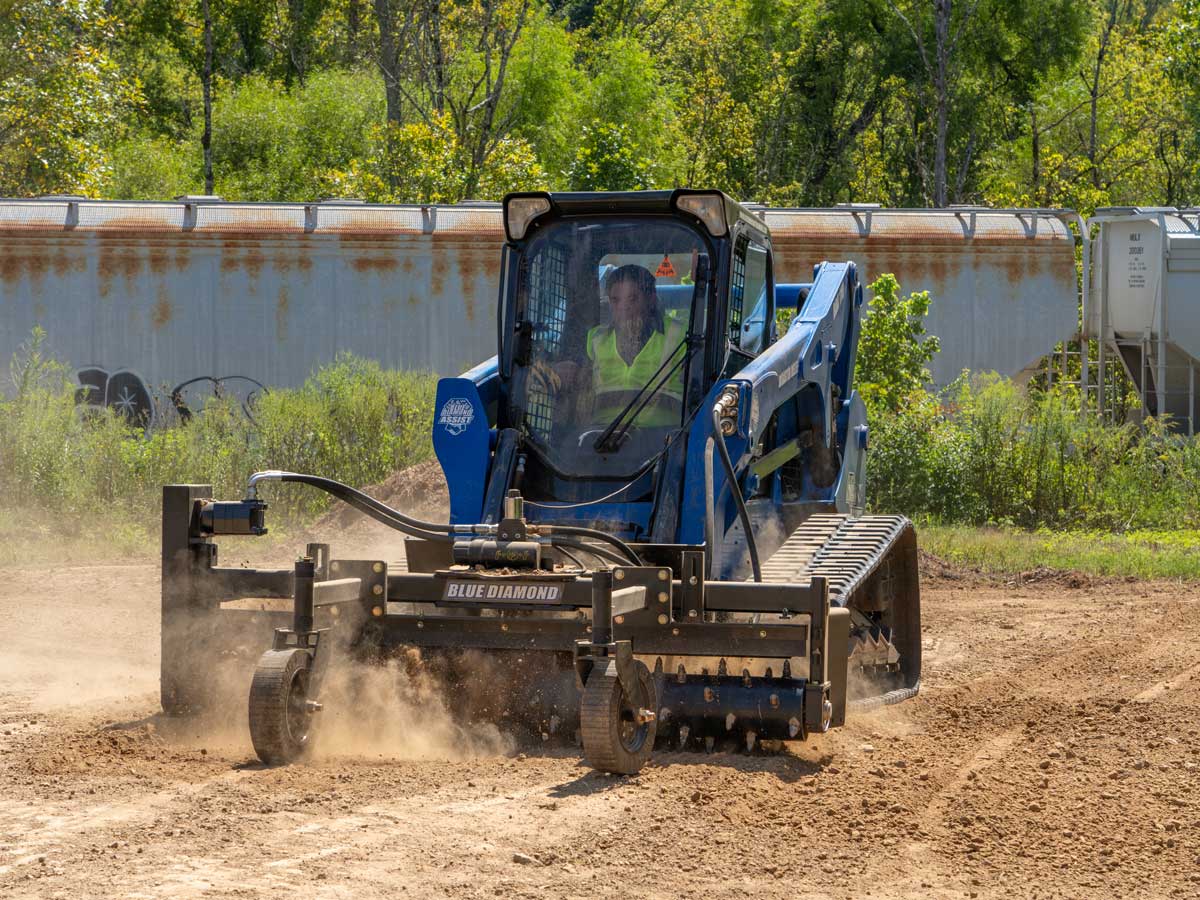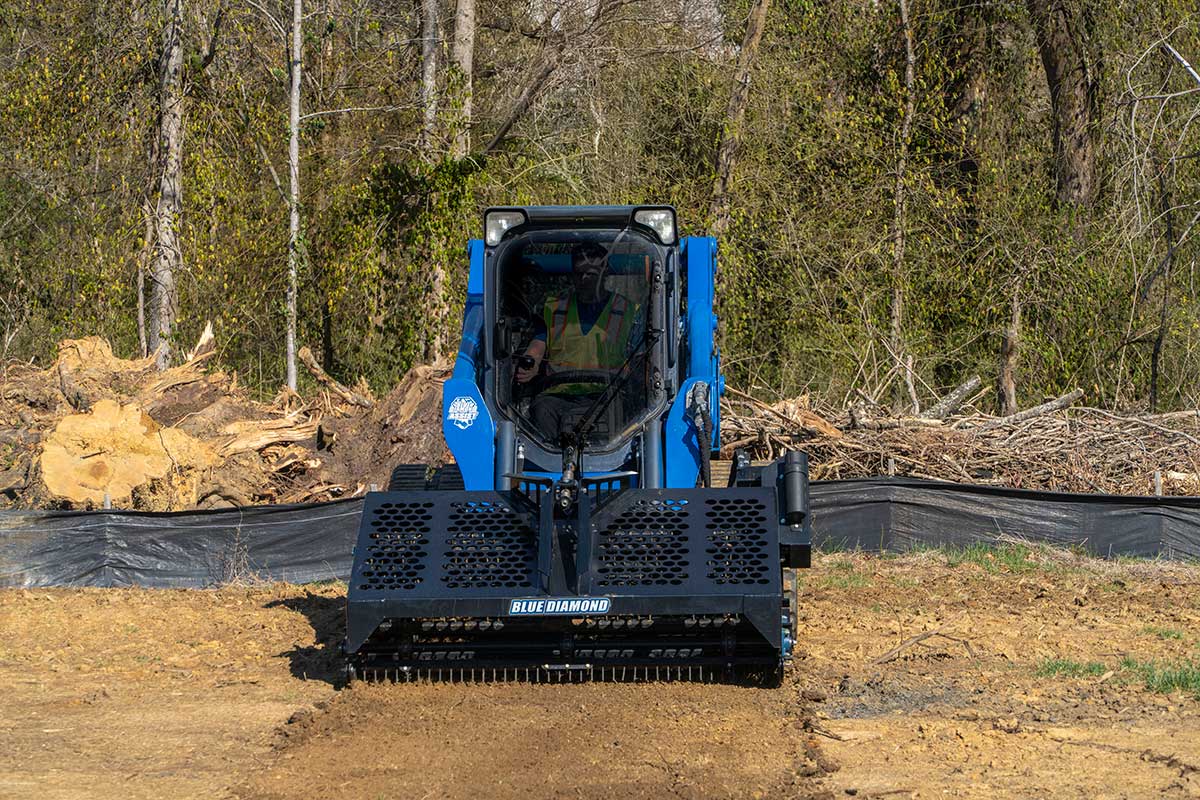Precision Cuts: Loftness Launches Tilt Hitches for Some of Its Excavator Mulching Heads

A new Tilt Hitch is available for 20 and 30 Series Battle Ax excavator mulching heads from Loftness. It allows operators to hydraulically tilt the mulching head on the boom for greater versatility and enhanced productivity on the jobsite.
When equipped with the Tilt Hitch, a mulching head can be tilted up to 45 degrees to the left or right. Compared with competitive units, which typically have restricted movement in one direction, the Loftness hitch offers one of the highest ranges of motion in the industry. Other advantages include a light weight and low cost, thanks to its practical, simplistic design.
Tilting the mulching head allows an operator to fully expose the knives when cutting into trees. Additionally, trees can be held in place for faster mulching performance by tilting and positioning the head so that the shear bar rests against the tree to prevent it from wobbling. When ground mulching, the head can also be tilted in a way to keep material from ejecting out the back or to help pick material off the ground for further processing.
The 20 and 30 Series Battle Ax attachments from Loftness are compatible with excavators ranging from 10,000 to 36,000 pounds. The Tilt Hitch will eventually be made available for the 40 and 50 Series Battle Ax models, which are designed for 36,000- to 88,000-pound excavators.

Loftness is an employee owned company. It manufactures the VMLogix line of vegetation management equipment, which includes hydraulic oil coolers, the Kwik-Trim compact mechanical tree trimmer, and high-performance mulching heads for a variety of equipment, ranging from excavators, skid steer loaders and up to 375-horsepower prime movers. For more information on Loftness’ complete product line, contact Loftness Specialized Equipment, P.O. Box 337, Hector, MN 55342, call 800-828-7624 (U.S. and Canada) or 320-848-6266 (international), email info@loftness.com, or visit www.loftness.com.





Comments are closed here.